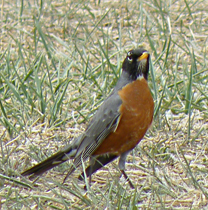|
Gardens that attract wildlifeWith careful planning, any back yard can become a designated wildlife habitat -- and even earn a plaque from the National Wildlife Federation. "Wildlife" in this context usually means birds and butterflies -- and if you want them, bees. All it takes to attract wildlife to your yard is to provide for their basic needs--food, shelter and water. The best plan is to configure these three requirements in ways that serve multiple purposes in your landscape so that while attracting wildlife, you are also enhancing aesthetics with seasonal color and getting practical results like more shade. Give them what they need and they will show up. Food Nectar is what attracts hummingbirds and butterflies and they can get it from both annual and perennial flowers. Marigold, zinnia, verbena, liatris and black-eyed Susan are all great nectar-providing plants. Butterfly bush, as the name suggests, is another great choice. Do you want bees? Many gardeners want to attract bees for pollination; others don't want them around. Be aware that there are bee-attracting plants like Russian sage when you plan your garden. Shelter Water Pondless water features are a better choice for attracting wildlife because they do not require daily maintenance, are typically shallow and have moving water that thwarts mosquitoes. Pondless features are also the most water-conserving type of water feature. Photo courtesy Barb Miller.
|



